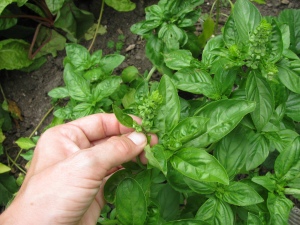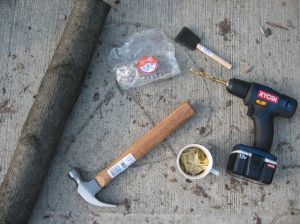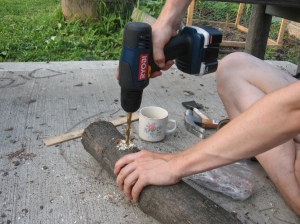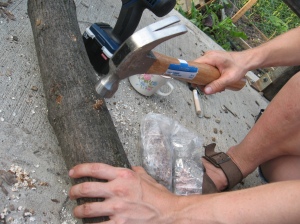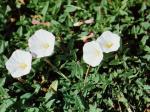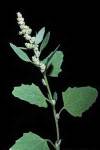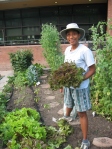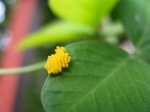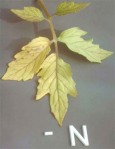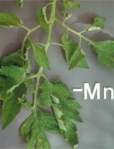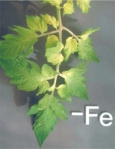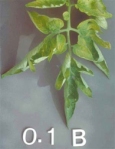Last week in the garden we did a lot of different maintenance jobs to keep the garden looking good and producing as much as possible. In addition to some heavy weeding, we removed our exhausted first crop of peas and replanted the area, and did lots of staking, harvesting and compost mixing. This gave me the idea to dedicate todays post to those little maintenance jobs that make the difference between a lush, productive garden and a whole bunch of spindly plants going to seed. I’ll break it down into specific plants while also generalizing about crops of that type since many of the practices are the same. For all crops,especially those with bushy growth like squash or bush beans, its extremely important to do a regular cleanup at least once a week. This means going through and removing any yellowing, diseased or dead leaves beneath the plants, as well as any fallen or stunted fruit. I used to believe it was best to leave this foliage to rot – what could be better than a plant that makes its own compost!?! In reality though, this puts your crops at a serious risk for disease, as fungi and disease that develop on rotting plant matter can easily move to living plants of the same type. So its always best to clean them up regularly, and throw any diseased leaves into the garbage so they aren’t given the chance to grow in your compost.
Carrots: Like most root crops, carrots can and should be continuously planted throughout the season. Reseeding them every two weeks or so ensures that whenever you harvest a bunch of carrots there will be another bunch almost ready to come out, rather than having one carrot crop midsummer and then having to wait another 70+ days for more. This requires a lot of space of course, but if you are a carrot/root veggie lover and will be devoting your garden to them anyway, try to plant in phases.
The most important maintenance you can do with all root crops is thinning. Thin them!! Some gardeners can just understand this and do it as a matter of course. I have always struggled with it, and given my carrots and beets unrealistically tight quarters to grow in. It doesn’t work. You end up with tiny or deformed vegetables, and it makes disease, pest attack and green shoulders (root tops coming above the soil) much more common if you crowd them. You can read seed packages and spacing guidelines or just think: how big does a carrot/beet/radish get? That’s how much space you need to leave them, no less. In addition, make sure to check on your root veggies every week or so and shore up the soil around them so that the roots remain underground; this can be done easily with a handrake or just by hand.
Once you do harvest them, give some consideration to what you’ll plant afterwards. As discussed in last week’s post on crop rotation, root veggies are light feeders, meaning that if you have a healthy soil, they can be followed with a heavy feeding crop such as tomatoes. At this point in the season however, you’ll need something with a shorter season, following with a leafy green (provided the sun isn’t too intense) or a legume plant would be a good idea. You could even follow with another round of root veggie if the soil seems healthy, provided you give it some nutrient building next rotation.
Tomatoes: Two major considerations for tomatoes are pruning and staking. To promote high yields in your tomato plants, it is good practice to remove additional shoots off of the main stem, focusing instead on developing one thick and vigourous central stem. This pushes the plant to focus on producing fruit rather than leaves, adds stability to the plant and increases the chances that all your fruit will ripen by fall. Not having low hanging stems also makes it easier to keep fruit off the ground and prevent disease and pest transmission.
This leads us to staking. Tomato plants come in two varieties: determinate, which grow to a limited size and produce a great deal of tomatoes at once, and indeterminate, which are vining plants and keep growing and producing throughout the season. Both need support, and attention needs to be paid after the installation of supports to make sure the plants are growing properly. Tomato cages are a popular approach, and if a smaller variety is being used and proper pruning being done, they can be successful. The easiest and most effective technique though, tends to be staking and tying the plants, using wooden or bamboo stakes and string, or ideally, the green velcro plant ties that can be re-adjusted as the plant grows and are much less labour intensive than tying strings.
Beans/Peas: Another type of plant that benefits from successive plantings, staggering your planting of both beans and peas can extend your harvest since individual plants are only productive for about a month. The most important thing to keep in mind with these kinds of plants is that they must be picked every few days to keep them productive. If peas and beans are allowed to sit and form large seeds or dry, that sends a signal to the plant that its reproductive work is done and it doesn’t need to keep growing. So be sure to harvest every two to three days, even if you don’t need beans that day, and store them in the fridge.
Raspberries: Staking is key for raspberries and especially blackberries or any kind of mix, such as the tayberries we have in our garden. Staking makes plants easier to pick and easier to care for in future years, by staking first and second year growth in different directions it is easier to recognize the fruiting 2nd year growth from the non-fruiting 1st year. The same system used for tomatoes works for these plants, but another popular technique uses stakes and wires to support the plants with less need for tying. Basically, 6 foot tall stakes are hammered in no more than 20 feet apart, and thick 9 gauge wire strung between them at a height of 3 feet and 5 feet. The berries are guided to support themselves along these wires, and blackberries (unless they are the erect variety which should be trimmed) redirected downwards once they reach the top. More intensive berry production can be accommodated with different styles of trellises, such as a V shape or T shape trellis. See University of Maine extension information here.
Squashes: Squashes also need to be trained, unless you have the space and desire to grow them along the ground. This isn’t a difficult process, especially if you get your trellis in position before planting, the most important thing is simply to keep an eye on the squash (or melon or cucumber) plants and ensure their tendrils are not grabbing anything other than the trellis. Without monitoring they can wrap around their own fruits and stems, or around neighbouring plants, choking them out. Additionally, once fruits begin to form, it’s a good idea to put something under them to separate them from the soil, protecting them from bugs and rot. Bricks, wood, tiles or upside down flowerpots are good props, hanging squash plants can also be supported by tying them to the structure with a sling of pantyhose or other material that supports them like a hammock.
Herbs: Deadheading and resowing are important things to keep in mind with herbs. Certain herbs, such as cilantro and parsley will rapidly go to seed in hot weather. Once the plants begin producing seed, leaf production decreases and the leaves become smaller, less fragrant and less flavourful, in short, not really worth it anymore. The best way to deal with this is just to sow seeds every few weeks, so that when the plants bolt you have more to harvest from, and you can just allow them to make seeds, and then use them to keep reseeding your crop. For other plants, such as basil or mint, they should be constantly and rigorously deadheaded – the flowering tops should be removed, ideally before they bloom. This keeps plants productive and tasty and allows you to control seed distribution; rather than the plants developing and scattering seed wherever and whenever, you decide when it is produced and can save it for the following season.

